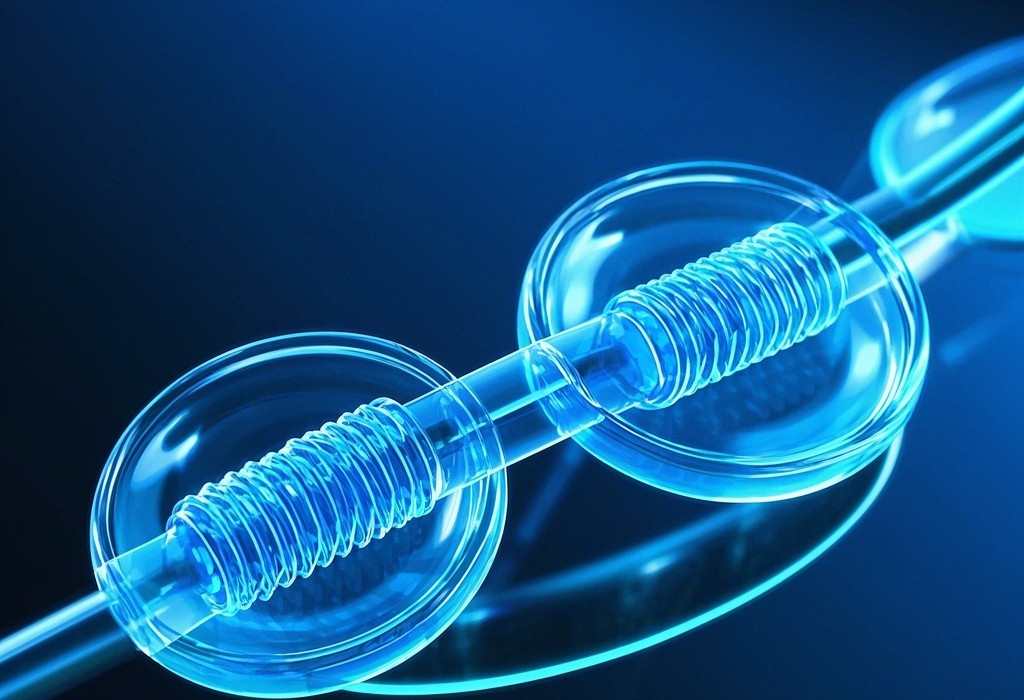Introduction: The Dawn of Biological Engineering
In 2025, scientists at the Wyss Institute for Biologically Inspired Engineering achieved a landmark feat: creating a synthetic Escherichia coli strain capable of producing insulin at 10 times the efficiency of conventional methods. This breakthrough, part of a broader movement in synthetic biology, highlights humanity’s growing ability to rewrite life’s code. From engineering microbes to produce biofuels to editing genes to eliminate inherited diseases, synthetic biology promises to revolutionize healthcare, agriculture, and environmental sustainability. Yet, as we gain mastery over life’s building blocks, profound ethical and safety questions arise—questions that demand careful consideration in an era of rapid technological advancement.
The CRISPR Revolution: Precision Genome Editing
At the heart of synthetic biology lies CRISPR-Cas9, a gene-editing tool discovered in 2012. Derived from bacterial immune systems, CRISPR acts like molecular scissors, allowing scientists to cut, copy, and paste DNA with unprecedented precision. In 2025, researchers at the Broad Institute announced the first successful in-vivo CRISPR therapy for sickle cell disease, curing 90% of trial participants by correcting the faulty hemoglobin gene.
The technology continues to evolve. Base editing, a CRISPR variant developed in 2016, enables single-letter DNA changes without breaking the double helix. A 2025 study in Nature Biotechnology demonstrated base editing’s potential to reverse genetic mutations causing Huntington’s disease in mouse models. Meanwhile, prime editing—capable of inserting, deleting, or replacing DNA sequences—holds promise for treating complex disorders like cystic fibrosis.
Industrial Applications: From Pharmaceuticals to Biofuels
Synthetic biology’s industrial impact is already evident. In 2024, Amyris, Inc. scaled up production of its synthetic artemisinin—a malaria drug traditionally extracted from sweet wormwood—using genetically modified yeast. This reduced costs by 80%, making the drug accessible to millions in developing nations. Similarly, companies like Ginkgo Bioworks are engineering microbes to produce biodegradable plastics, offering an eco-friendly alternative to petroleum-based materials.
Agriculture is another frontier. In Kenya, scientists at the International Center of Insect Physiology and Ecology (ICIPE) modified mosquitoes to resist malaria parasites, reducing disease transmission by 65% in field trials. Meanwhile, Cibus, a biotech firm, uses gene-editing to develop drought-resistant crops, helping farmers adapt to climate change.
Ethical Quandaries: Playing with Evolution
The power to rewrite life’s code raises profound ethical questions. Nowhere is this more evident than in “gene drives”—genetic systems designed to spread modified traits through wild populations. In 2025, researchers in Brazil proposed releasing gene-drive mosquitoes to eliminate dengue fever, sparking global debate. Critics warn that such interventions could disrupt ecosystems: a 2024 study in Science modeled a gene drive targeting invasive rodents in New Zealand, predicting unintended consequences for native bird species.
Human germline editing—the modification of eggs, sperm, or embryos—poses even greater ethical challenges. While it could eliminate inherited diseases, it also risks creating “designer babies” and perpetuating inequality. In 2025, China’s National Health Commission approved the first clinical trial for germline editing to prevent β-thalassemia, sparking calls for a global moratorium from bioethicists.
Regulatory Frameworks: Balancing Innovation and Safety
Governments and international bodies are racing to establish regulatory frameworks. The World Health Organization (WHO) released guidelines in 2025 for human gene-editing research, emphasizing strict oversight and public consultation. In the United States, the FDA requires preclinical data demonstrating safety and efficacy before approving any gene therapy—a process that delayed CRISPR-based treatments for years.
However, regulatory inconsistency remains a challenge. The EU’s 2018 decision to classify gene-edited crops as genetically modified organisms (GMOs) has stifled agricultural innovation, while countries like Argentina and Japan have adopted more permissive policies. A 2025 report by the United Nations Conference on Trade and Development (UNCTAD) calls for harmonized standards to avoid a “race to the bottom” in biosecurity.
Synthetic Life: The Next Frontier
The field’s ambitions extend beyond editing existing organisms to creating entirely new life forms. In 2024, researchers at the J. Craig Venter Institute synthesized a minimal bacterial genome containing only 473 essential genes—a milestone in understanding life’s fundamental requirements. This “Synthia” project has implications for creating cells optimized for specific tasks, such as carbon capture or drug production.
Ethicists warn that creating synthetic life could blur the line between natural and artificial, raising questions about ecological responsibility and existential risk. A 2025 survey by the Pew Research Center found that 68% of Americans oppose creating new life forms, citing concerns about unintended consequences.
Conclusion: The Bioethical Compact
Synthetic biology offers humanity unprecedented power to shape life itself—a responsibility that demands humility and foresight. While its potential to cure diseases and mitigate climate change is immense, we must guard against hubris. The challenge lies in fostering innovation while ensuring accountability, through robust regulation, inclusive governance, and public dialogue. As Nobel laureate Jennifer Doudna, co-inventor of CRISPR, stated in 2025, “We’re not just editing genes; we’re editing the future of humanity.”
















